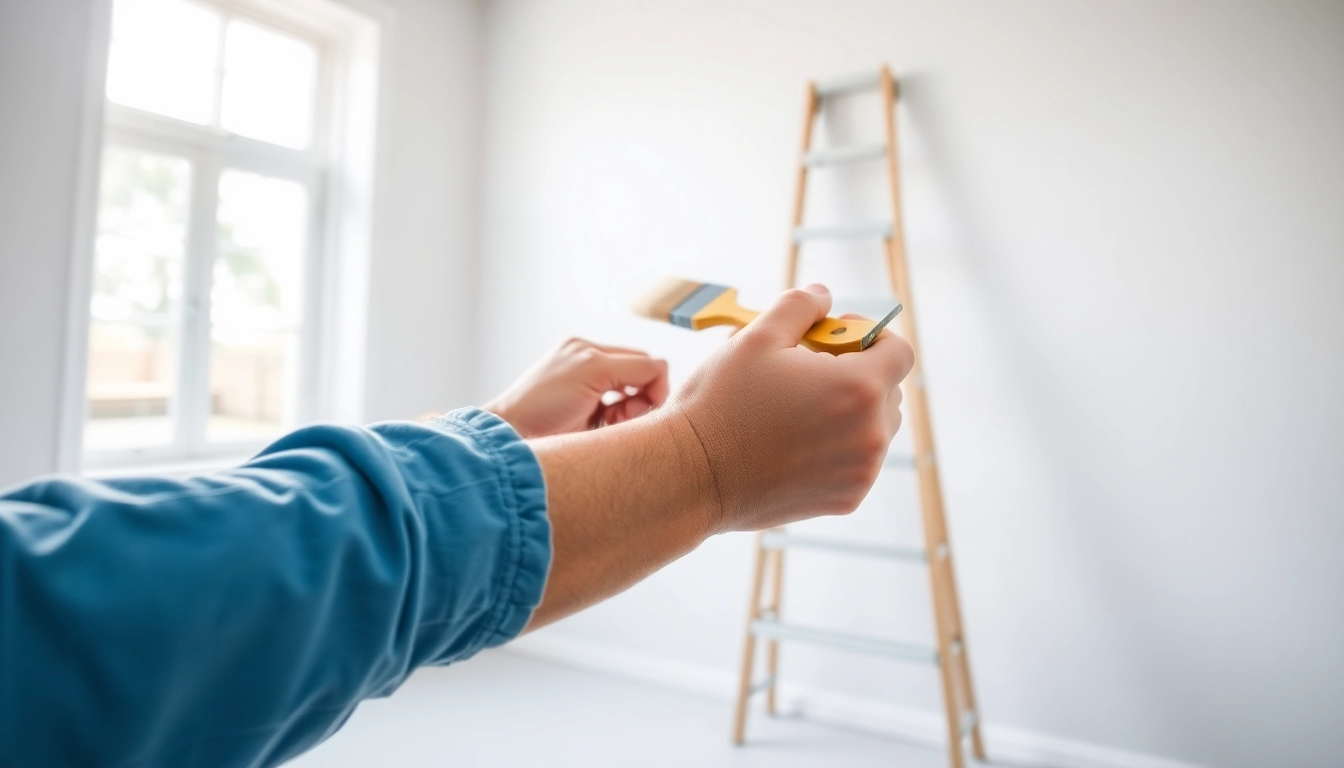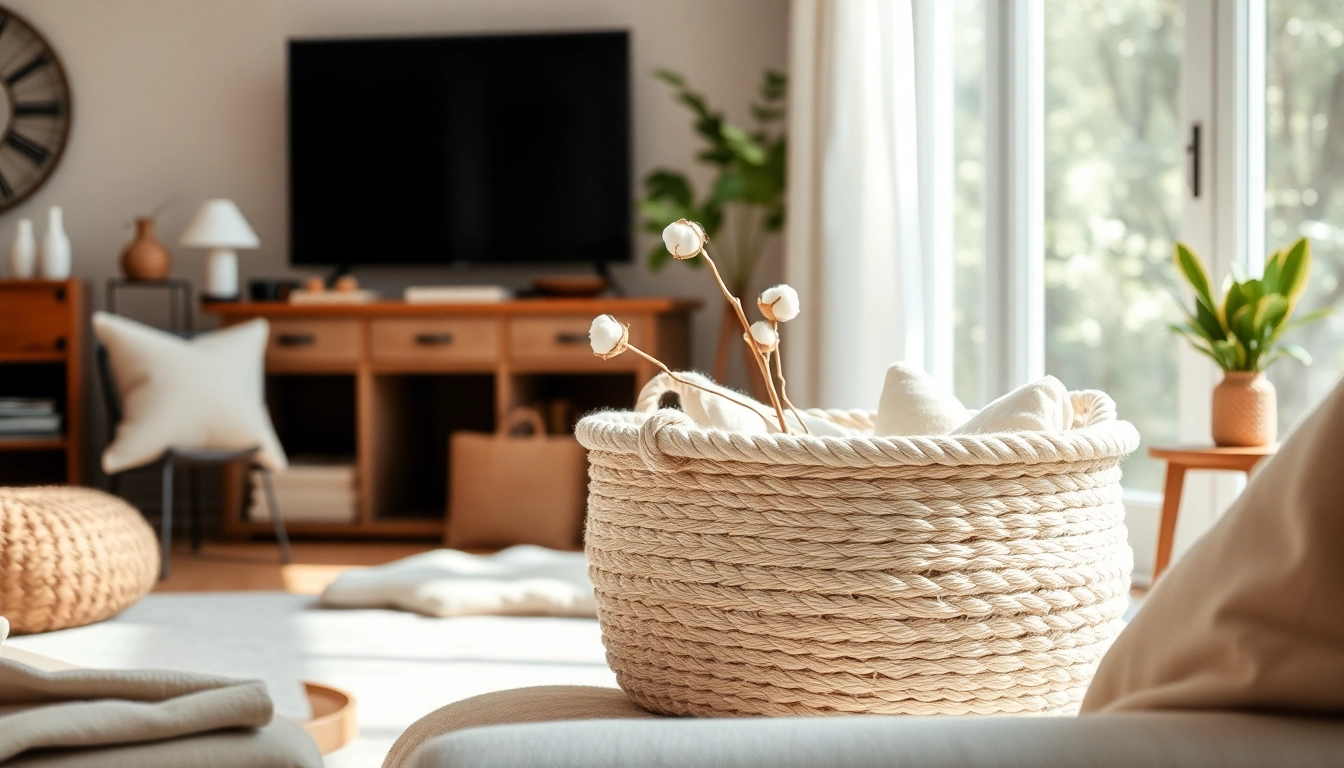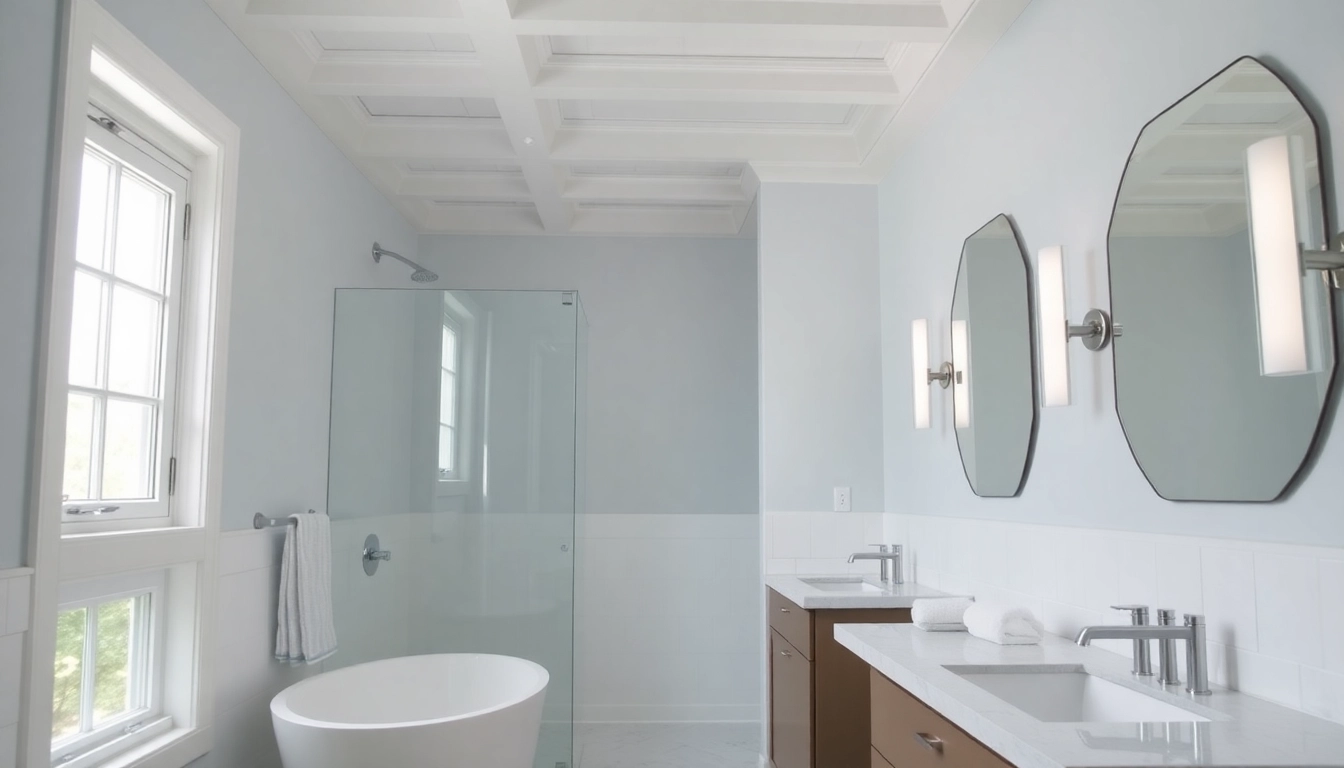Understanding the Basics of Drywall Painting
Introduction to Drywall Materials
Drywall, or gypsum board, is a widely used material in modern construction for creating interior walls and ceilings. It consists of a core made of gypsum (a soft sulfate mineral) sandwiched between two layers of heavy paper. The choice of drywall material can significantly affect the final appearance and durability of your painted surface. When properly primed and painted, drywall offers a smooth, ready-to-decorate surface that can enhance any room’s aesthetics.
Why Proper Preparation is Crucial
The preparation stage is fundamental in the drywall painting process. Properly preparing your drywall not only ensures a better adhesion of paint but also helps achieve a flawless finish. Before starting your painting project, you need to check for any imperfections on the surface, like dents, scratches, or dust. Cleaning and smoothing out these flaws is essential to avoid uneven finishes and peeling paint. In fact, as outlined in drywall painting best practices, neglecting this crucial step can lead to costly mistakes and additional work down the line.
Common Mistakes in Drywall Painting
Many first-time painters often make mistakes that can compromise the quality of their work. Among the most common errors are:
- Skipping Primer: Some may see primer as an unnecessary step. However, primer is vital as it enhances paint adhesion, especially on new drywall.
- Inadequate Surface Preparation: Failing to clean and repair the surface can lead to an uneven finish.
- Using the Wrong Tools: Not using the right tools, like brushes or rollers suitable for drywall, can affect the paint application and appearance.
- Rushing the Process: Taking shortcuts can lead to a sub-par finish. Patience is key in each step, from preparation to final touches.
Essential Tools and Supplies for Drywall Painting
Must-Have Painting Tools
When it comes to drywall painting, having the proper tools on hand is crucial. Here’s a comprehensive list of essential painting tools:
- Paint Rollers: Ideal for large flat surfaces. Choose one with a nap appropriate for your surface texture.
- Paint Brushes: Needed for corners and edges. A quality angled brush is perfect for tight spots.
- Droplights: To illuminate the work area and reveal imperfections on the wall surface.
- Sandpaper or a Drywall Sander: For smoothing the surface after patching and before priming.
- Primer and Paint: Use a quality drywall-specific primer followed by high-quality latex or acrylic paint.
- Paint Tray: For holding paint as you work; also advisable to use liner for easier cleanup.
- Masking Tape: Important for ensuring clean lines between the drywall and adjacent surfaces.
Choosing the Right Type of Paint
The selection of paint type is crucial for achieving the desired finish and longevity. Two popular types of paint for drywall are:
- Acrylic Paint: Water-based, quick-drying, and versatile. It’s easy to clean up and offers good color retention.
- Latex Paint: Another water-based option, latex paint is durable and resistant to fading, making it a popular choice for interior walls.
When selecting colors, keep in mind that lighter colors tend to show imperfections more easily than darker shades, which is something to consider especially on newly applied drywall.
Importance of Using Primer on Drywall
Primer is an indispensable step in the drywall painting process. It offers several benefits:
- Enhances Paint Adhesion: Primer creates a bonding layer between the drywall and the paint, ensuring better adhesion and minimizing drips and sags.
- Seals the Surface: A primer seals the porous surface of drywall, which helps prevent the paint from soaking in unevenly, resulting in a more uniform appearance.
- Reduces Paint Absorption: Using a primer can significantly reduce the amount of paint needed for full coverage, saving both time and materials.
How to Prepare Drywall for Painting
Cleaning and Scraping the Drywall Surface
The first step in preparing drywall for painting is ensuring that it is clean and smooth. Here’s how to do it:
- Begin by vacuuming the surface to remove dust and debris. A HEPA vacuum can be particularly effective at capturing fine particles.
- Inspect the drywall for imperfections—look for holes, rough areas, or joints that may need attention.
- Use a putty knife to scrape off any loose paint, tape, or texture that could interfere with adhesion.
Applying a Primer: Best Practices
Choosing the right primer and applying it correctly can set the groundwork for a great finish:
- Start by selecting a drywall primer that suits the type of paint you will use.
- Apply the primer evenly with a roller for large areas and a brush for corners.
- Ensure that you allow adequate drying time as indicated on the primer’s label. Typically, this may range from 1 to 4 hours.
Repairing Imperfections Before Painting
Once the primer has dried, inspect the surface carefully:
- For holes or dents, use a joint compound to fill in gaps, and allow it to dry completely.
- Sand down any patched areas until they are smooth and flush with the surrounding drywall.
- For a perfect blend, apply a thin coat of primer over patched areas after sanding.
Techniques for Painting Drywall
Choosing the Right Painting Method: Brush vs. Roller
Choosing the right method to apply paint can vastly affect the final result. Brushes and rollers have different applications:
- Brushes: Best for cutting in at edges, corners, and intricate designs or textures.
- Rollers: Ideal for covering large, flat areas, allowing for faster application.
- Consider using a combination of both for the best coverage and finish.
How to Achieve an Even Finish
For a perfectly painted surface, follow these expert tips:
- Use even pressure when rolling, and avoid overworking the paint.
- Work in small sections, blending edges to prevent visible lines.
- For best results, slightly overlap each stroke to create a uniform layer.
Layering Paint for Maximum Quality
For optimal durability and beauty, it’s often necessary to apply multiple layers of paint:
- Two to three coats of quality paint might be required for full coverage, especially on lighter colors.
- Always allow the previous coat to dry completely before applying the next for the best adherence and a smooth finish.
- Sand lightly between coats for a flawless, professional quality.
Finishing Touches and Maintenance for Painted Drywall
Sealing the Paint with a Topcoat
While not always necessary, applying a sealant can provide added protection:
- Consider applying a clear topcoat for high-traffic areas or spaces that might incur moisture, like kitchens or bathrooms.
- Ensure the paint is fully cured before applying any sealant as per the manufacturer’s instructions.
Long-Term Maintenance Tips for Painted Walls
Once your drywall is painted, maintaining its look is crucial to longevity:
- Regularly clean the walls with a gentle detergent solution to avoid buildup of grime.
- Avoid harsh cleaners that can damage the paint.
- Perform touch-ups on scratches or marks as needed using leftover paint for the best match.
How to Handle Touch-Ups and Repairs
Over time, it’s likely that your walls may need repairs due to dings or scuffs. Here’s how to handle them:
- For minor scratches, a simple touch-up with leftover paint is usually sufficient.
- For larger damaged areas, sand the affected area, apply a primer if necessary, and repaint for a seamless repair.
- When matching paint for touch-ups, ensure you use the same batch whenever possible to avoid color inconsistencies.



